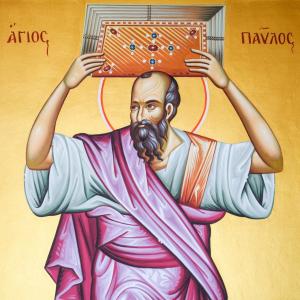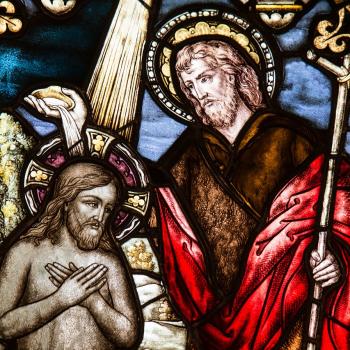What can we learn about missions from Saint Paul? Dean Flemming provides us with a helpful guide in his perceptive studies.*
Flemming distinguishes between a narrow and broad sense of mission in the Apostle Paul’s letters. In the narrow sense of gospel and church planting, the term involves initial activities and refers to a group of called individuals seeking to bring outsiders to faith in Jesus. This group also actively seeks to place converts into Christian communities (Rom 10:8–18; 1 Cor 9:19–23; Gal 1–2; Eph 3:1–13).
More preferable, however, is a broad or comprehensive sense of mission. This includes the restoration of all nations and the entire creation as belonging to God’s purpose. Paul thus participates in this activity as a “gospel mission” that is not only interested outwardly in non-believers but also focused inwardly on the transformation of Christ communities.
Paul’s mission is thus not about “dominant groups coercing less powerful people to accept their beliefs or cultures. Mission in Paul is about getting caught up in God’s liberating, reconciling purposes in the world” that includes sharing not only the gospel message but his own life (1 Thess 2:8; “Mission” 704–05).
Gospel Motivations
Paul is committed to missions and gospel proclamation (Rom 1:1; 15:16; Eph 3:7; Col 1:23). His motivations for doing what he does include at least three things:
First, he had been commissioned by God in Christ to proclaim the gospel (Gal 1:11–12, 15–16; 1 Cor 9:16). Second, the love of God demonstrated at the cross compelled him to do what he does (2 Cor 5:14; Rom 5:8; Gal 2:20). Third, he has compassion for people who would face divine judgment apart from salvation in Jesus (Rom 2:8, 16; 1 Cor 1:18; 9:19–23; 10:33; 1 Thess 1:10).
His gospel includes several activities:
(1) It tells the story of the divine saving work in Christ (1 Cor 1:24)
(2) It is a divine transforming power that works in the world (Rom 1:16)
(3) It functions as a “theopolitical” announcement in contrast with the good news about Caesar (the ruling empire of that time)
(4) It is the truth to be upheld and defended (Gal 1:6–7)
(5) It is the norm for living (Phil 1:27). (see Full Mission, 163–69; “Mission,” 703–05).
Telling the Story of the Gospel
Paul’s gospel involves more than merely communicating a set of propositions. Rather, it “tells the story of God’s loving and redeeming mission in Christ” from God about Christ (Rom 1:1; 15:16; 2 Cor 11:7; 1 Thess 2:2, 8; cf. Rom 15:19; 2 Cor 9:13; Gal 1:7).
Among other things that story centers on Christ’s death and resurrection, the promise of restoration, and it is bound up with Abrahamic promise to bless the nations. This gospel story also is a transforming power that is not only to be believed but constitutes Christian conduct, saves, reconciles, and is universal, for both Jews and gentiles (“Mission,” 709–12).
Missionary Strategy and Aims
Paul evangelized urban centers (1 Thess 1:8). Presumably, I think, if Paul were to do a good job of discipling, other gifted individuals in these centers might be able to reach out to neighboring towns and rural areas.
In Rom 15:19, his missions to the nations started in the east (Jerusalem) and moved towards the west with Rome and Spain as his next targets. He learned to be flexible, socially and culturally accommodating the persons he wanted to win for Christ (1 Cor 9:19–23). Our apostle also did not work alone but had many co-workers with him, such as Timothy, Silas, Priscilla, Aquila, Titus, and others (“Missions” 707–08).
He aimed to establish mature, multi-cultural communities in Christ (Col 1:28; cf. 1:15–29), bringing people to the obedience of faith (Rom 1:5; 16:26).
Ultimately, he wanted to be able to take pride in his converts at final judgment rather than see them fall by the wayside and his ministry among them be in vain (Gal 2:2; Phil 2:16). In doing so, he determined to help establish Messianic rule over creation so that God might be “all in all” (1 Cor 15:20–28).

Paul’s missionary practices, then, were not only about winning people to Christ but also raising up communities in Christ and nurturing those communities (1 Cor 3:7–10; 9:22; Rom 5:9–10; 1 Thess 2:19). The communities in turn were to embody the gospel as the new creation in the world, living out that message and narrating that gospel in mission participation.
Notes
See Dean Flemming, Recovering the Full Mission of God: A Biblical Perspective on Being, Doing and Telling (Downers Grove: IVP, 2013) esp. 163–71. Dean Flemming, Why Mission? (Nashville: Abingdon, 2015). Dean Flemming, “Mission.” Dictionary of Paul and His Letters, ed. Scot McKnight, with Lynn Cohick and Nijay Gupta, 2nd edition (Downers Grove, IL: IVP, 2023), 703–14 (I draw mostly from the latter here, though if I throw in a few of my own thoughts, any error is mine!).

















